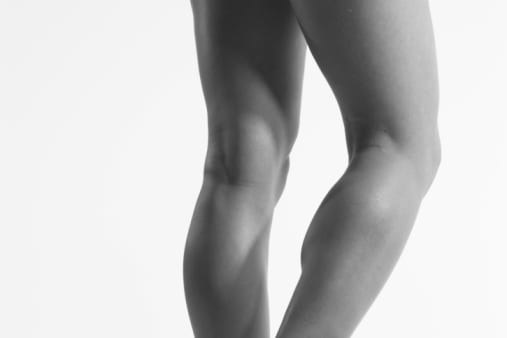What goes down must go up when it comes to blood circulating to your legs. Because the blood fights against gravity, if the one-way valves that open to let blood back to your heart are weak or damaged, blood can back up, resulting in varicose veins. According to the National Heart Lung and Blood Institute, a number of factors may increase your risk for varicose veins, including a family history of them, obesity and pregnancy.
Lifestyle Changes
Your first line of defense against varicose veins is changing your daily routine. First, if you sit a lot, stand up more often; if you stand all the time, sit down when you can. Get moving to improve your muscle tone. Lose weight if you are obese; that will ease pressure on your legs. Try not to cross your legs when you sit. Raise them above the level of your heart whenever possible, and avoid tight clothes and high heels.
Amulatory Phlebectomy
An outpatient procedure called amulatory phlebectomy surgically removes varicose veins through small slits made in the skin. With local anesthesia, it’s a generally painless process. Incisions typically heal completely without stitching in about six months.
Endovenous Ablation
Endovenous ablation, a less invasive treatment, uses the heat of radio frequencies or laser energy to cauterize (burn) and close up the varicose veins. Blood then flows to adjacent healthy veins instead, and the enlarged vein should shrink down. The physician numbs the area where a catheter is inserted, uses ultrasound to see the vein and then inserts a laser or radio frequency instrument through the catheter.
Alternative Treatments
Two herbal remedies can potentially help reduce varicose veins. The more common is horse chestnut (also called buckeye), which generally comes in a topical application. The other is bilberry, eaten or made into extracts. People who want to try these methods should inform their physicians.



